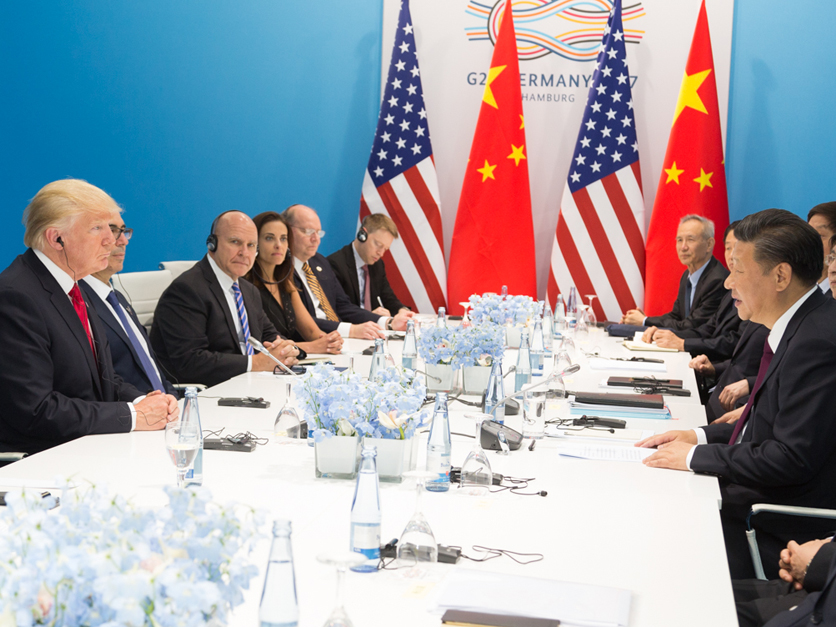China’s Finance Ministry announced Thursday that on Feb. 14 it will cut tariff rates on $75 billion worth of U.S. products, including some ag commodities such as soybeans, chicken, pork, oranges and asparagus, but the impact is expected to be minimal.
The action basically cuts in half the tariff rate increases (between 5% and 10%) that China put in place on Sept. 1 in response to new U.S. tariffs. For example, for soybeans, the Chinese punitive tariffs rose to 30%, but on Feb. 14, that rate will drop to 27.5% (not including the base 3% tariff permitted under WTO rules).
The rate cut is generally seen in the U.S. as a goodwill gesture by China with no major impact on trade. It follows China’s agreement to a partial “phase one” trade pact with the U.S. in December. Under that deal, China pledged to boost imports of U.S. ag commodities even though neither side agreed to do away with the tariffs that have been the hallmark of the prolonged trade war.
“The next step of adjustment depends mainly on the development and changes of the Sino-US economic and trade situation,” China’s Finance Ministry said in a statement. “We hope to work with the United States towards the ultimate elimination of all tariff increases.”
U.S. government and industry officials continue to say they expect China to boost imports by granting targeted exemptions to the tariffs, although that too has come into question as China deals with the outbreak of the deadly coronavirus. National Economic Council Director Larry Kudlow said this week he expects the increase in Chinese imports to be delayed.
Interested in more coverage and insights? Receive a free month of Agri-Pulse or Agri-Pulse West by clicking here.
When it comes to soybeans, whether the tariff rate is 30% or 27.5% is expected to make little difference. All of the U.S. soybeans China has been buying over the past six months were purchased under government exemptions to all of the punitive tariffs and that’s expected to remain the case in the foreseeable future.
U.S. pork is in a similar situation, but with higher tariffs of 72% before any new reduction.
“We are working to confirm the impact on U.S. pork. In the meantime, we urge China to remove all punitive tariffs on U.S. pork to get us on a level playing with international competitors that are at 8 percent,” said a spokesman for the National Pork Producers Council. “If all restrictions on exports to China were removed, in 10 years, U.S. pork would double sales, create 184,000 new American jobs and reduce the U.S. trade deficit with China by nearly 6%.”
However, the tariff drop could do some good for the U.S. poultry sector, USA Poultry and Egg Export Council President Jim Sumner tells Agri-Pulse. Chinese tariffs on U.S. poultry will fall by 5% and that will be enough to give the U.S. a better chance at beating out exporters in countries like Brazil.
The current 35% tariff is not slowing down U.S. exports of chicken paws, but it is having an impact on sales of other cuts. About 80% of the chicken being shipped to China now is in the form of paws, but exporters are also selling drums and leg quarters, Sumner said.
“We’ll take every little bit of help we can get,” he added.
China is also reducing rates on plenty of U.S. specialty crops, , but the cuts are relatively minor and are not expected to substantially spur trade. For example, China’s tariff rate on asparagus would dip from 48% to 43%. It’s a drop of five percentage points, but the tariff remains substantial.
Similarly, China will enact 5% rate cuts for walnuts, almonds, pistachios, oranges, lemons, strawberries, grapes, peaches, apples and pears, but the remaining rates will still range from 50-70%, prohibiting any meaningful trade.
One California official stressed that what western growers sorely need is China to follow through on tariff exemptions and begin importing more fruits, vegetables and tree nuts, but that hasn’t happened yet.
For more news, go to www.Agri-Pulse.com


